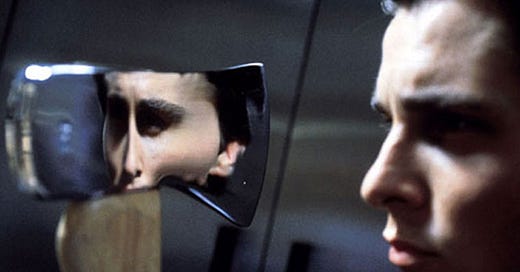Heroes of the Zeroes: American Psycho
Heroes of the Zeroes is a daily, alphabetical look back at the 365 best films from 2000 to 2009.
"American Psycho" Rated R 2000
When Patrick Bateman caused a cop car to explode in “American Psycho,” Mary Harron’s 2000 film solidified what was merely suggested in Bret Easton Ellis’s novel: All of this 1980s stockbroker’s dismemberment and destruction was just a figment of a delusional, deviant imagination.
But Harron took one bold step further with co-writer Guinevere Turner, hypothesizing that not even Patrick’s non-homicidal moments were real — those of laziness and misogyny while receiving compliments, issuing rigidly followed orders and stating opinions regarded as superior.
For all we know, Patrick wasn’t toned, tanned and muscular a la Christian Bale (emitting a gleeful despicability, with every mannerism a mask for morbid impulses). That Patrick could be the masturbatory “success” fantasy of some shlub in a basement.
Harron asked what’s more unnerving — the exaggerated violence some imagine or the vacuous reality some want to be real, psychosis as much in the construct as the character.
Thus, “Psycho’s” savagery went beyond a simple screed against excess and greed (although Harron expertly used horror and comedy hallmarks for high-society satire). “Hip to Be Square” and “Sussudio” became forever redefined with electrically sleazy subtext, John Cale’s score evoked Bernard Herrmann’s chilliness at the right moments and “Don’t just stare at it, eat it” became one of the decade’s most coldhearted directives.
Fashion and music change, but not the debasing aspects of image-forming. What’s deemed sexy often is unattainable. “Psycho’s” playfully perverse climactic confession — a David Lynchian nightmare where even the buildings swallow Bateman up — made that painfully, bleakly clear.



